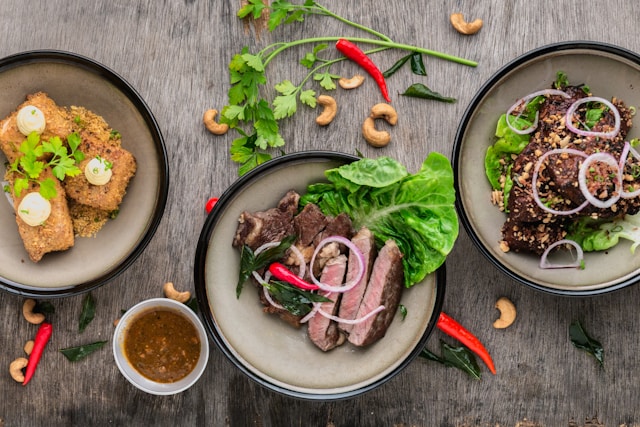Beyond the Breakfast Buffet: Unveiling the Hotel’s Knife Arsenal
Within the symphony of a hotel kitchen, a meticulously curated set of knives serves as the conductor’s baton. Each blade, meticulously chosen and maintained, plays a distinct role in the creation of culinary masterpieces. The quality, variety, and care given to these instruments directly affect the rhythm and flow of food preparation, influencing both the efficiency of the kitchen and the creativity dished onto plates.
This guide dives into the essential knife types that form the backbone of any well-equipped hotel kitchen. We’ll explore not only the function of each blade but also delve into the art of selecting and maintaining these crucial tools, ensuring a smooth-running and innovative kitchen environment.
Everyday Culinary Tools
The Chef’s Knife: The Maestro’s Baton – Imagine a single instrument capable of soaring violin solos and booming cello riffs. The chef’s knife, typically 8 to 10 inches long, embodies this versatility. Its broad, tapered blade tackles a wide range of tasks, from the delicate chiffonade of herbs to the robust chopping of vegetables. A true maestro in the kitchen, the chef’s knife empowers both seasoned chefs and aspiring cooks.
The Serrated Knife:
The Baker’s Best Friend – For breads with a defiant crust and a yielding center, the serrated knife swoops in like a knight in shining armor. Its saw-like teeth effortlessly conquer tough exteriors, ensuring clean, even slices without smushing the soft insides. This champion also tackles delicate pastries and tomatoes, showcasing its surprising finesse.
The Paring Knife:
The Artist’s Paintbrush – When intricate tasks demand a touch of precision, the paring knife steps onto the stage. Its petite, sharp blade, usually 3 to 4 inches long, tackles peeling, trimming, and detail work with remarkable dexterity. Think deveining shrimp or crafting vegetable garnishes – the paring knife thrives in these artistic endeavors.
The Peeling Knife:
The Sculptor’s Chisel – For fruits and vegetables yearning to shed their outer layers and reveal their vibrant core, the peeling knife, also known as a tourne knife, is the sculptor’s chisel. Its short, curved blade conforms perfectly to various shapes, ensuring minimal waste and efficient peeling. This knife excels at creating decorative cuts, transforming an ordinary carrot into a work of art.
Specialized Knives: Expanding the Culinary Repertoire
Beyond the core four, a well-equipped kitchen welcomes specialized knives to address specific culinary challenges:
The Carving Knife:
A Standing Ovation for Roasts – Imagine carving a succulent roast with effortless precision. The carving knife, with its long, thin blade, achieves just that. It glides through cooked meats, poultry, and roasts, leaving behind thin, even slices that are a testament to both the chef’s skill and the quality of the cut.
The Boning Knife:
Unveiling the Hidden Gems – The boning knife, a slender, flexible blade, acts as a mapmaker, navigating the intricate landscapes between bone and meat. Its sharp point and narrow profile allow chefs to follow these pathways with precision, extracting cuts of meat with remarkable efficiency.
The Bread Knife:
A Slice Above the Rest – Distinct from its serrated cousin, the bread knife boasts a longer blade with deeper serrations. This design expertly tackles all bread types, from crusty baguettes to pillowy focaccia, delivering uniform slices that showcase both the texture and presentation of the loaf.
The Utility Knife:
The Adaptable Performer – Imagine a knife that seamlessly bridges the gap between the chef’s knife and the paring knife. The utility knife, typically 4 to 7 inches long, fulfills this role admirably. It tackles medium-sized tasks such as slicing fruits and vegetables or handling smaller cuts of meat. This versatile performer adds another layer of convenience to any kitchen.
A Sharpened Focus on Performance
Just like any well-maintained instrument, knives require proper care to perform at their best. Here’s how to ensure your blades stay sharp and ready to deliver:
Storage Symphony:
A Place for Every Note – Proper storage protects both the longevity and performance of your knives. Magnetic strips offer a visually appealing and accessible option, while knife blocks and drawer inserts provide space-saving solutions. Remember, loose storage in drawers is a recipe for dulled blades and potential safety hazards.
Safety First:
The Conductor’s Golden Rule – In the bustling kitchen, prioritizing safety allows the culinary symphony to flow smoothly. Using the right knife for the task and maintaining a sharp edge are crucial for preventing accidents. Additionally, proper cutting techniques and immediate cleaning and storage after use contribute to a safe working environment.
Conclusion
Equipping a hotel kitchen with the right knives is the foundation for achieving culinary excellence and operational efficiency. A well-rounded set of knives, including the essential chef’s knife, serrated knife, paring knife, and peeling knife, forms the core of everyday tasks. Specialized knives like the carving knife, boning knife, bread knife, and utility knife further enhance the kitchen’s capabilities, adding precision and versatility to address any culinary challenge.
Proper storage and safety practices ensure these vital instruments remain in top condition, ready to deliver consistent performance. By understanding the various types of knives and their functions, hotel kitchens can maintain high standards of food preparation, contributing significantly to the overall success of the hospitality operation. Investing in quality knives, and training staff on their proper use and maintenance, yields not only efficiency and safety but also empowers culinary creativity.
Just like a well-rehearsed orchestra, a hotel kitchen equipped with the right knives and knowledgeable staff can produce a symphony of flavors that will leave a lasting impression on every guest.
